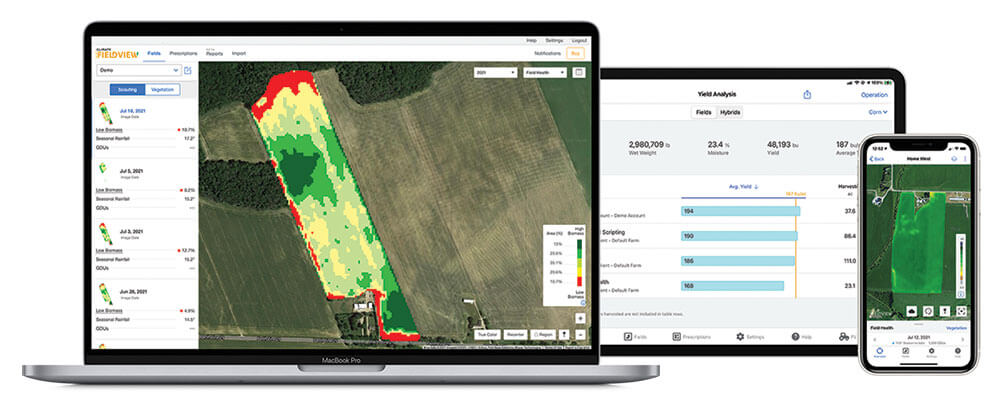Innovations in action
 Canola Digest asked its six farmer panelists to describe the best innovation they thought of themselves or recently adopted on the farm. Farmers are innovating or applying innovations all the time, trying to find better ways to solve problems. They may not even realize they’re doing it.
Canola Digest asked its six farmer panelists to describe the best innovation they thought of themselves or recently adopted on the farm. Farmers are innovating or applying innovations all the time, trying to find better ways to solve problems. They may not even realize they’re doing it.
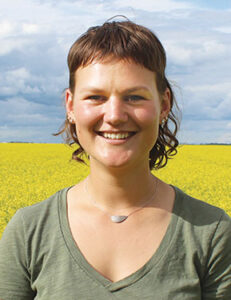 Fiona Jochum
Fiona Jochum
St. Francois Xavier, Manitoba
When Fiona Jochum came back to the farm, she started from ground zero when learning how to maintain and operate the farm’s fleet of machinery, keep financial records, and all other steps to farm management. So she took “notes like crazy” along with photos to create standard operating procedures for everything – she calls them “cheat sheets” – and put them together into her Farm Domination Notebook.
“When I encounter something that hasn’t happened before, I write down what we did and add it to the document. It makes these jobs so much faster the next time we do them.”
—Fiona Jochum
“I came up with this on my own, but later realized that many other farms are also doing this,” she says.
In succession planning talks, presenters would often ask, what is your plan to run the business if the main manager is suddenly not available? Jochum’s standard operating procedures are her answer. They’re helpful for anyone new, like her cousins who have joined the farm. Detailed procedures are also helpful for her, despite having a few years of experience, to remember all the things needed to get the seeder ready for the season, for example.
The seeder file includes photos with arrows showing where to find all the grease zerks, photos and notes showing how to set the monitors and calibrate rates, the order to plug in hydraulic hoses, and so much more. “When I encounter something that hasn’t happened before, I write down what we did and add it to the document,” she says. “It makes these jobs so much faster the next time we do them.”
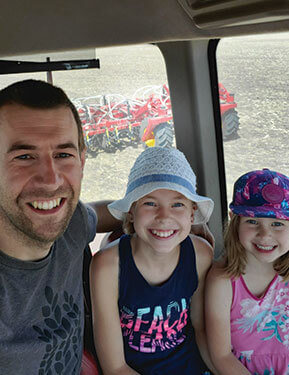 Ryan Sawatsky
Ryan Sawatsky
Killarney, Manitoba
Ryan Sawatsky describes two steps of innovation: First, we have to recognize the problem. “This in itself is hard enough,” he says. Second, we have to solve the problem.
“I do not put myself in the category of inventor or innovator,” he says. “Every time I try to fix something, I always seem to think of the hardest way to go about it. Then my wife comes along and says, ‘Why not try that?’”
“I know where my trucks are at all times. This time of year, I can tell if they’re stuck in a line up at the elevator. At harvest, I can see if they’re on their way back to the field. I don’t have to call and ask, ‘Where are you?’”
—Ryan Sawatsky
One innovation he uses quite a bit is the My Operation app from John Deere. It tracks machinery locations and logs numerous data points for each machine. He also has an app called Razor Tracking that piggybacks on My Operation to add other machinery, like his trucks, to the same John Deere interface. “I know where my trucks are at all times,” he says. “This time of year, I can tell if they’re stuck in a line up at the elevator. At harvest, I can see if they’re on their way back to the field. I don’t have to call and ask, ‘Where are you?’”
Razor Tracking plugs into the truck’s wiring harness to give him fluid levels as well as location. “I’m surprised how much I look at that thing,” he says.
Sawatsky also gets new ideas from a very old invention – books. He just read Fooled by Randomness: The Hidden Role of Chance in Life and in the Markets by Nassim Nicholas Taleb. “I value ideas that get me out of my bubble of farming,” Sawatsky says.
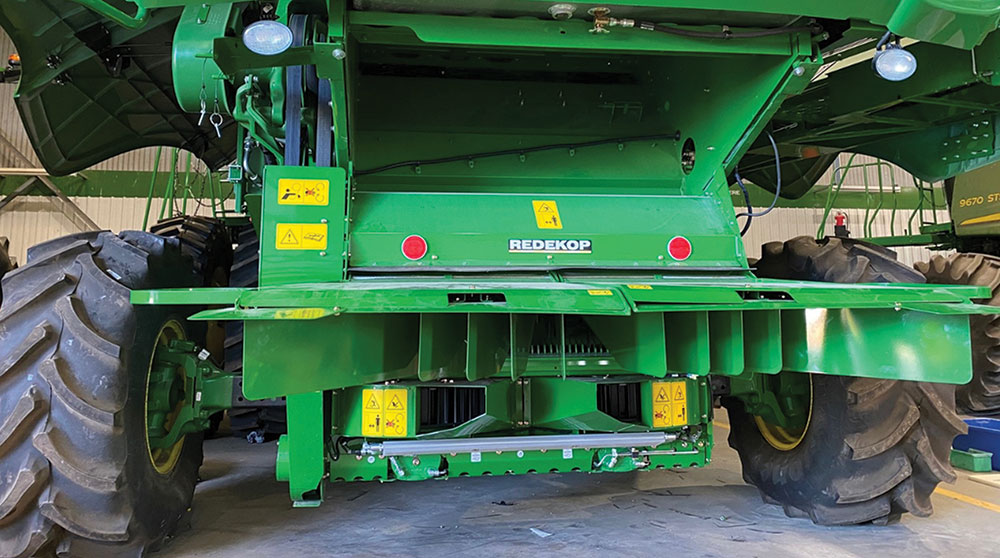
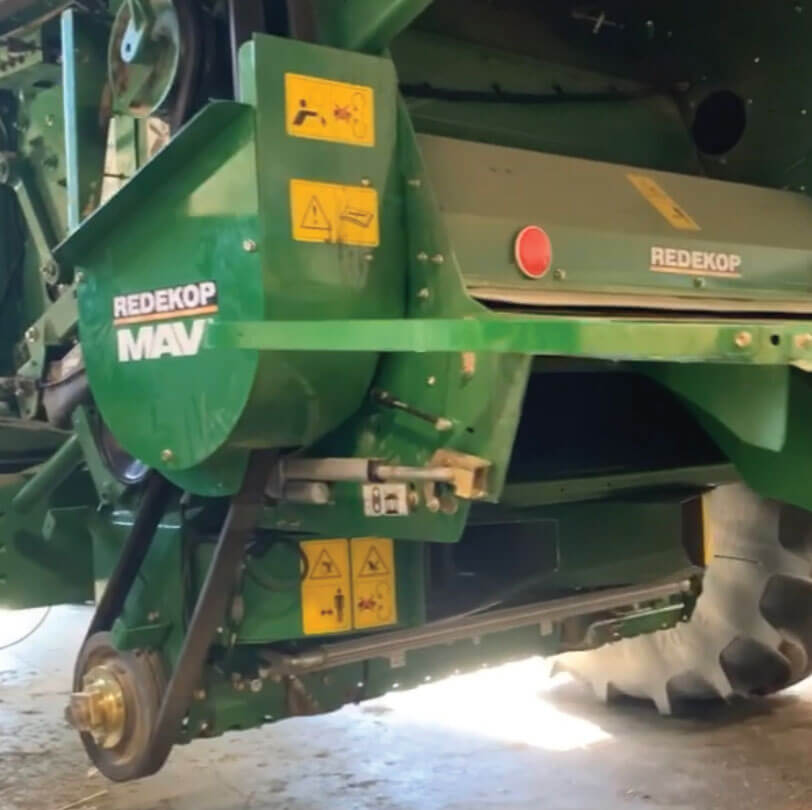
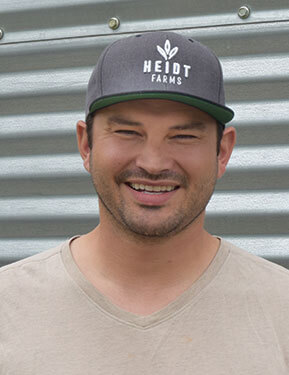 Josh Heidt
Josh Heidt
Kerrobert, Saskatchewan
Josh Heidt has Redekop Seed Control Units on two combines to destroy weed seeds in the chaff. Herbicide-resistant wild oats and kochia “drew me in” to buy them, he says.
Two years ago, Heidt mounted the weed seed destroyer at the back end of one combine. That combine would do all opening rounds, headlands and weed problem areas while the other four combines worked the rest of the field. At least that was the plan. “With that one combine, I couldn’t keep up to what I wanted to get done,” he says, so this past fall he equipped a second combine.
“If herbicides are not going to work, we need to bring alternative methods to the table.”
—Josh Heidt
Heidt is a regular driver on these weed-destroyer combines and he says it doesn’t change the way the combine operates, but it burns more fuel and “you have to be more conscious of what you put through the combine.” In one unfortunate situation, a rock knocked a steel finger off the pickup reel. That finger when through the combine, entered the weed seed destroyer and “blew it apart”.
Heidt now has magnets to capture anything metal before it enters the fast-moving mills. “These magnets pick up an incredible amount of stuff,” he says. It’s amazing how many rusty bits of old barbed wire go through the combine.
With herbicide-resistant weeds a bigger problem, Heidt needed to take action. “This is probably just going to get worse,” he says. “If herbicides are not going to work, we need to bring alternative methods to the table.”
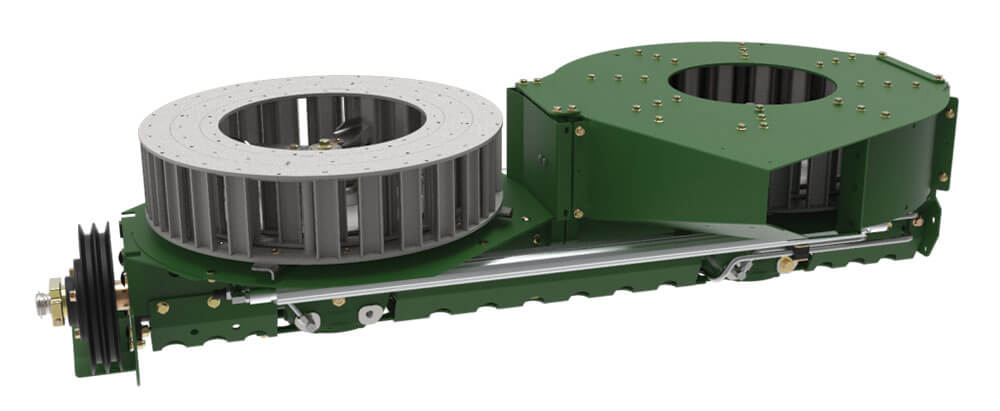
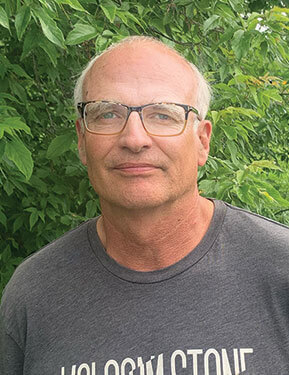 Murray Lewis
Murray Lewis
Cleardale, Alberta
Murray Lewis follows two innovative practices to protect his “low tilth, high clay, fragile soils.” These are no-till and controlled-traffic farming.
“We have heavy, poorly drained soil, and I started controlled traffic to improve infiltration and aeration. If we had three feet of black clay loam, I probably wouldn’t bother.”
—Murray Lewis
“It is shocking how much tillage is happening in my area again,” he says. “No-till is innovative again.”
Lewis adopted controlled-traffic farming in 2014 to create a better root environment for his plants. “We have heavy, poorly drained soil, and I started controlled traffic to improve infiltration and aeration,” he says. “If we had three feet of black clay loam, I probably wouldn’t bother.”
He has a 40-foot drill, 40-foot combine header and 120-foot sprayer to use the same tracks, or tramlines, over and over. This creates highly compacted tramlines but avoids traffic in all other field areas. Increased productivity in non-traveled areas should more than make up for lost productivity from the tram lines – but it can take a while to see results.
“This is a long-term project,” Lewis says. The effects of compaction can last years, which is why he’d recommend yield comparison trials after 10 years. Results the first few years may not be that obvious.
Lewis says the biggest issue with the tramlines is rutting with the sprayer, especially when he uses it to apply fertilizer top ups. If soil moisture justifies extra nutrient, it also means the soils can be a little greasy. He shares a tramline renovator with another farmer, using it to fill ruts and smooth the tracks for the combine and grain cart.
Keeping all traffic to tramlines forced Lewis to make one notable adaptation to his grain cart. He rigged a conveyor, which he made from a MacDon draper, to the top of his cart. It stretches toward the combine. The combine unloads onto the conveyor, which moves grain into the cart. “Far nicer ones are built in Australia,” he says, but his home-made version does the trick. With it, the cart can stay on the tramlines.
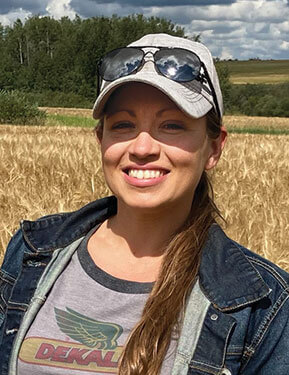 Melissa Damiani
Melissa Damiani
Bluffton, Alberta
The Damianis each work off farm, and they try to use ideas gathered from their day jobs to solve problems on the farm. Melissa Damiani is an agronomist and branch manager for the Nutrien location in Rimbey. Her husband, Jason, is a pipe fitter with his own company.
Farmers feel like they’re expected to know about all the things going on in their fields, she says, so there’s a stigma about hiring an agronomist. “There shouldn’t be. I see a big need for it.”
—Melissa Damiani
“Working with old equipment requires special problem-solving skills,” she says.
Farming in evenings and weekends and with little kids also means labour challenges. One of her customers solved one labour challenge in a unique way. Farms often need extra people when moving machinery from field to field. They need someone to pick them up and take them back to get the truck, for example. This farmer bought an electric off-road scooter. It fits in the cab and he can use it to zip home along the back roads. “I love the idea but I don’t really see us doing that. My husband is too much of a Cummins man,” Damiani says.
However, one labour-saver that could help a lot of farms, even if it doesn’t seem that innovative, is to hire an agronomist if they don’t have time to scout. “If agronomy wasn’t my passion, I would probably hire someone to do that for us,” Damiani says. Farmers feel like they’re expected to know about all the things going on in their fields, she says, so there’s a stigma about hiring an agronomist. “There shouldn’t be,” she says. “I see a big need for it.”
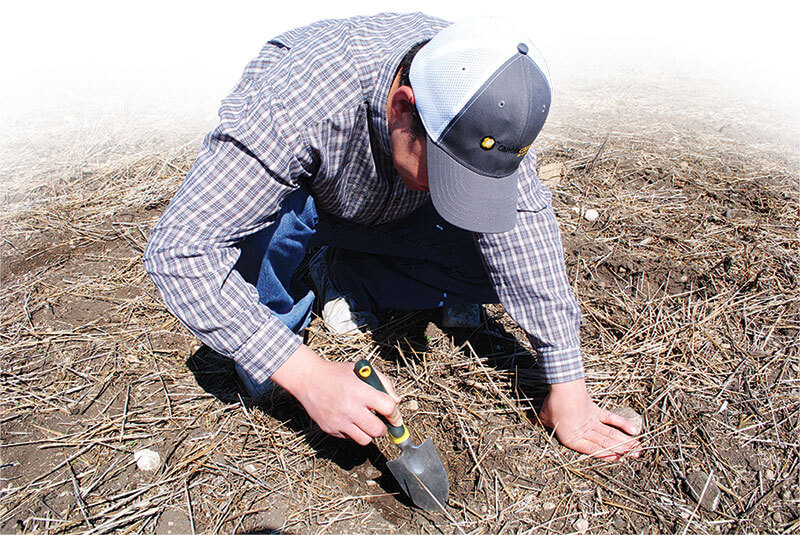
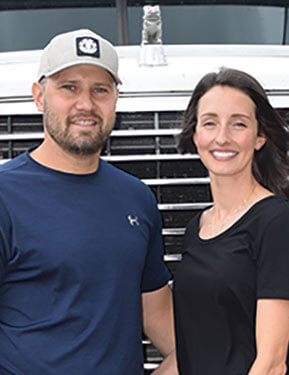 Breann and Bryce Moore
Breann and Bryce Moore
LeRoy, Saskatchewan
Bryce Moore, through his agronomy job, has clients who do farm trials every year, and these clients tend to be the best producing farmers. They use strip trials to gather intelligence on new farm practices. “That way they’re not guessing about what works,” Bryce says. If results don’t support continued use of the practice, they scrap it.
“Looking at the vegetative difference part way through the season, I thought this was a game changer. But at harvest therewas no yield difference.”
—Bryce Moore
This inspired Bryce and Breann to take their data management to the next level. They bought a cart with a scale so they could verify combine yield monitor maps. They subscribed to Climate FieldView to get normalized difference vegetation index (NDVI) satellite imagery that shows crop biomass at various stages throughout the season. And for 2023, they ordered a drone, which they’ll use to provide closer-to-ground images for problem areas identified through the satellite NDVI images.
In 2022, the Moores ran trials on some new land near the Quill Lakes. The land is higher in salinity and sodium, and they tried a few soil enhancement products to see if they could improve yields. They had six treatments in strips 60-feet wide and replicated three times each. Results showed no statistical differences between treatments, but the Moores noted a short-coming with NDVI. “NDVI was not fine enough to identify individual strips,” Bryce says, so they’ll use the drone in 2023 to zoom in a little closer.
Multiple sources of data are important for decision-making, he adds. In another trial, he worked with a farmer client to compare strips given an extra fertilizer treatment of potassium and boron. “Looking at the vegetative difference part way through the season, I thought this was a game changer,” Bryce says. “But at harvest there was no yield difference.”
At mid-season, Moore was ready to adopt this practice on his own farm, but with that extra layer of harvest data analysis, he’s no longer convinced. That is why critical analysis of multiple sources of data is so important. Farmers can’t afford to adopt practices that don’t work.
